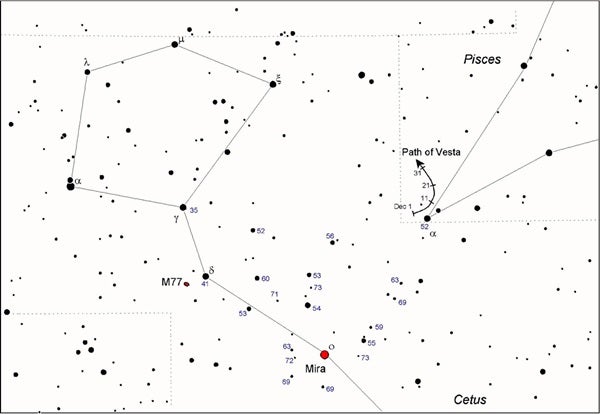Looking at this chart, notice how many of the stars surrounding Mira have numbers next to them. Each represents that star’s apparent magnitude rounded to the nearest tenth and then multiplied by 10 to avoid a period being misinterpreted as a star. For example, the star marked “55” is magnitude 5.5, and so on. Those stars do not vary in brightness, so they may be used as comparison stars when judging the brightness of Mira and Vesta, which do vary. The magnitudes shown are based on values from the American Association of Variable Star Observers www.aavso.org.
The unusual galaxy M77 is also shown on the chart. M77 is the brightest of several galaxies found near Delta (δ) Ceti, although none of the others will be seen through binoculars. Even M77 needs 70-mm or larger binoculars to be visible. Look for its small, faint disk about halfway between Delta and an isosceles triangle of 8th-magnitude stars 1.5° to the southeast.










